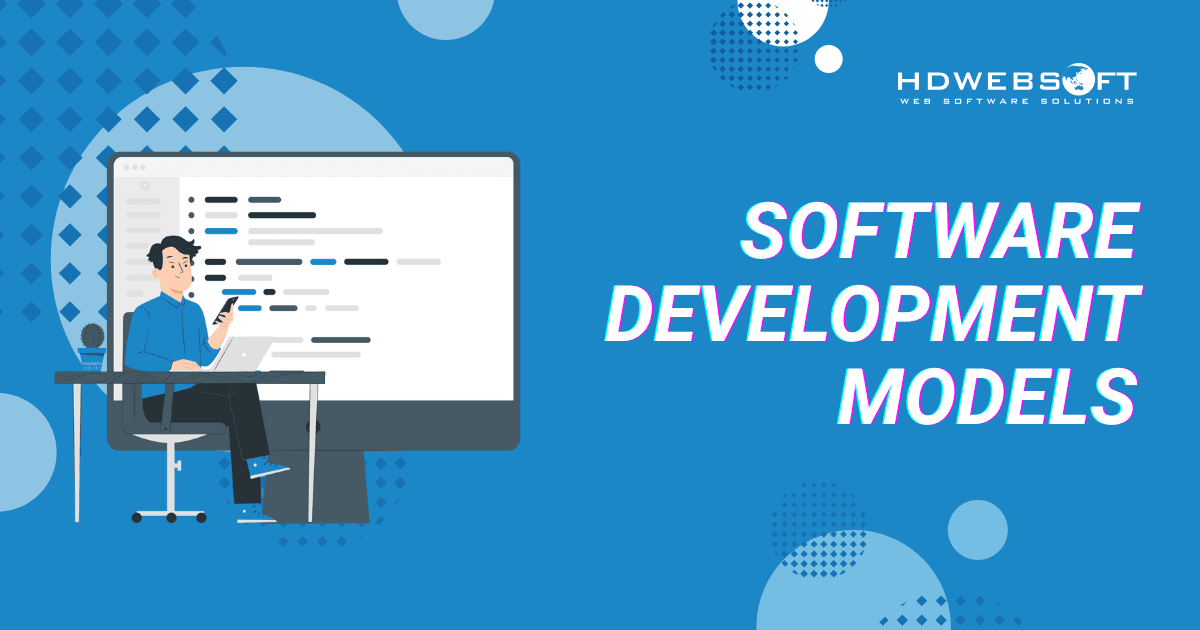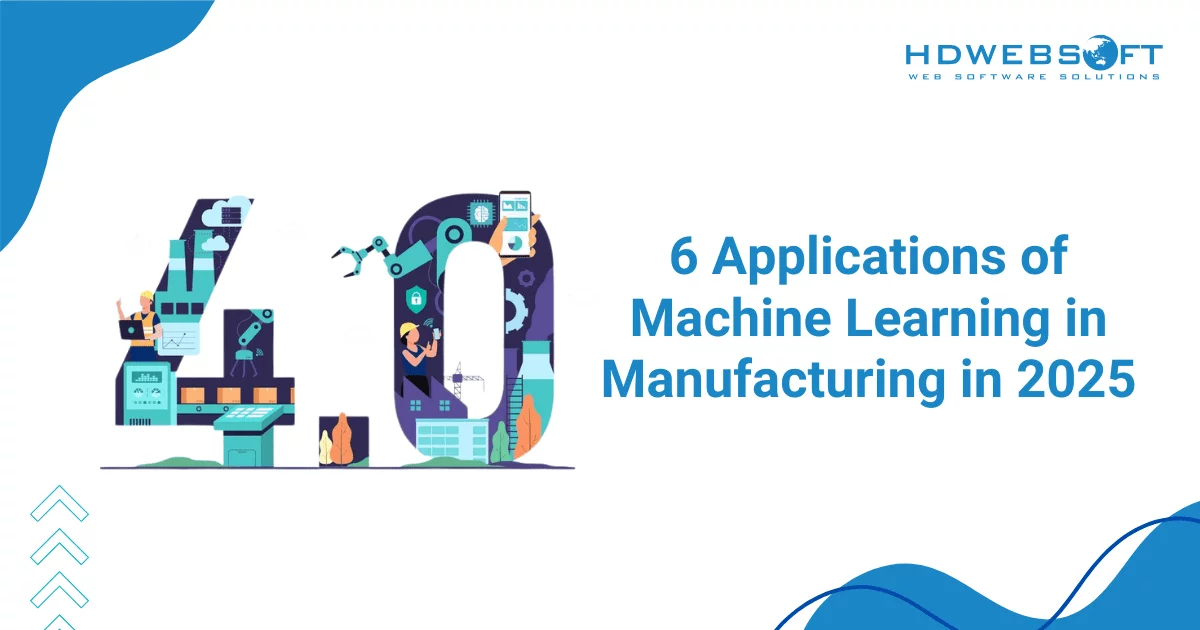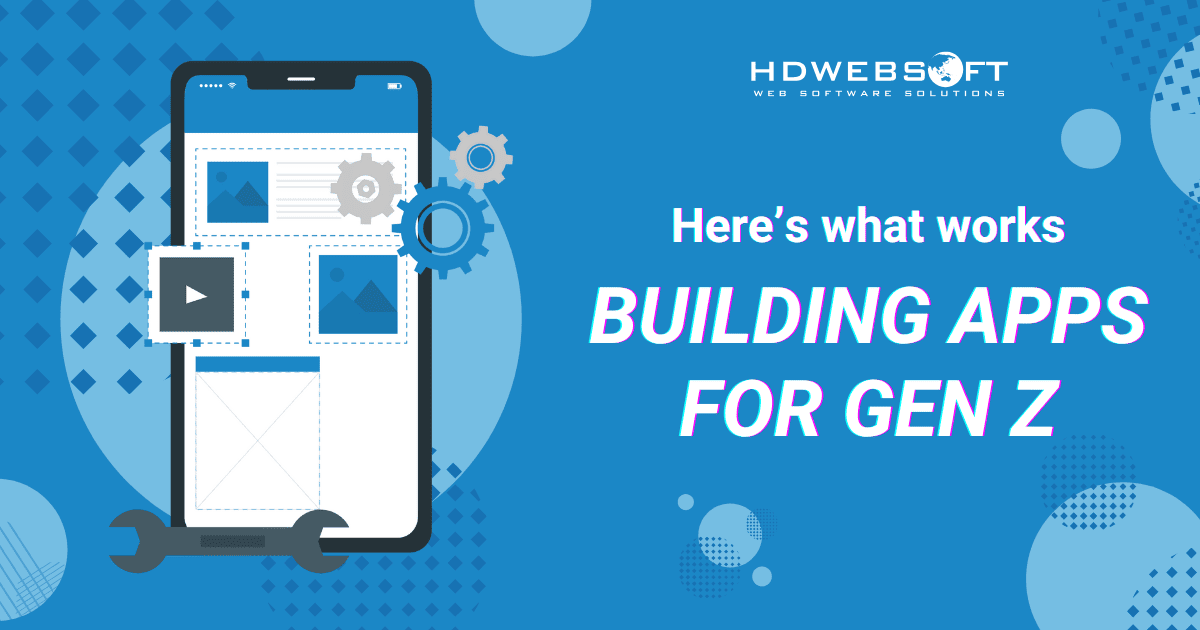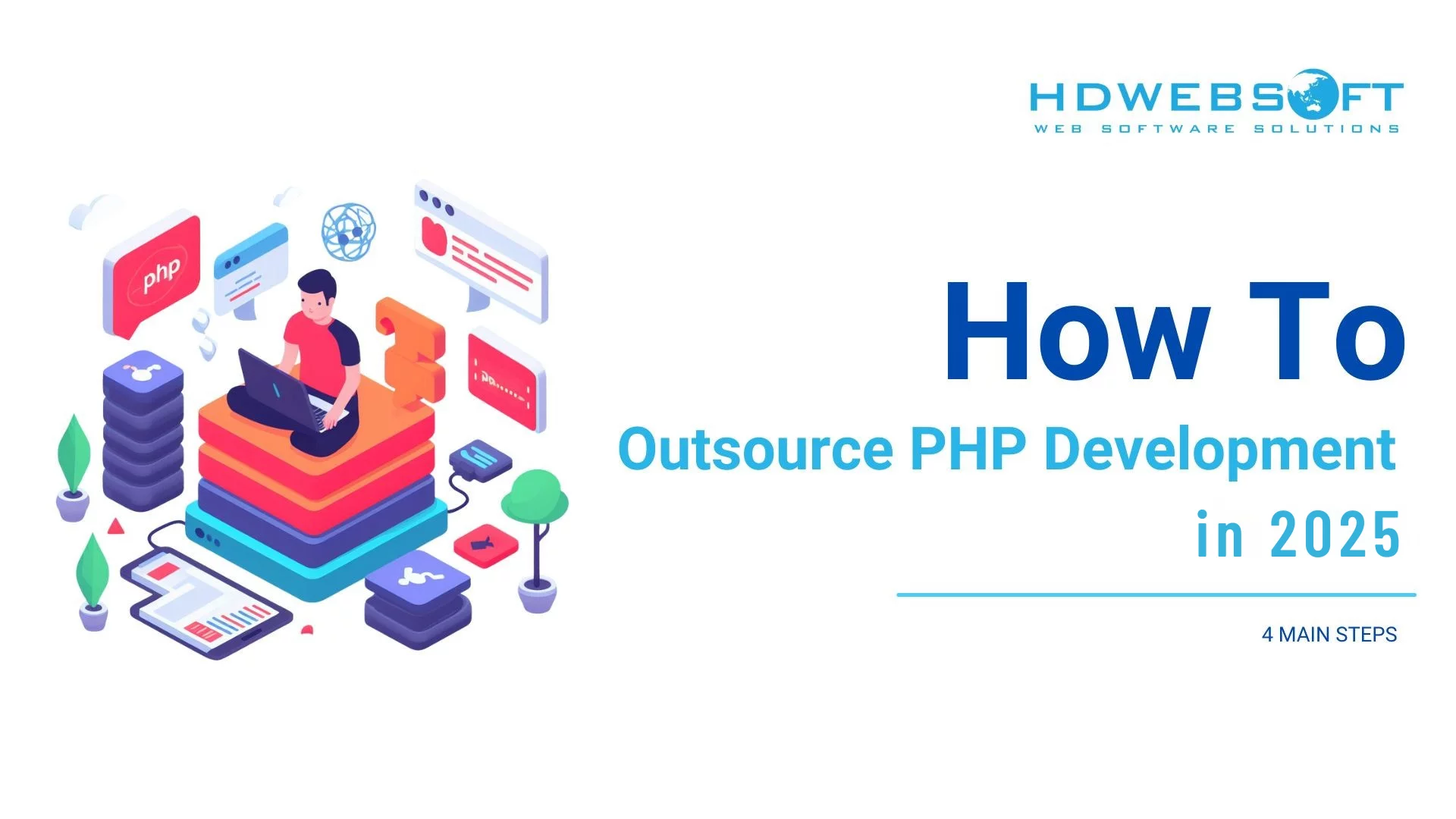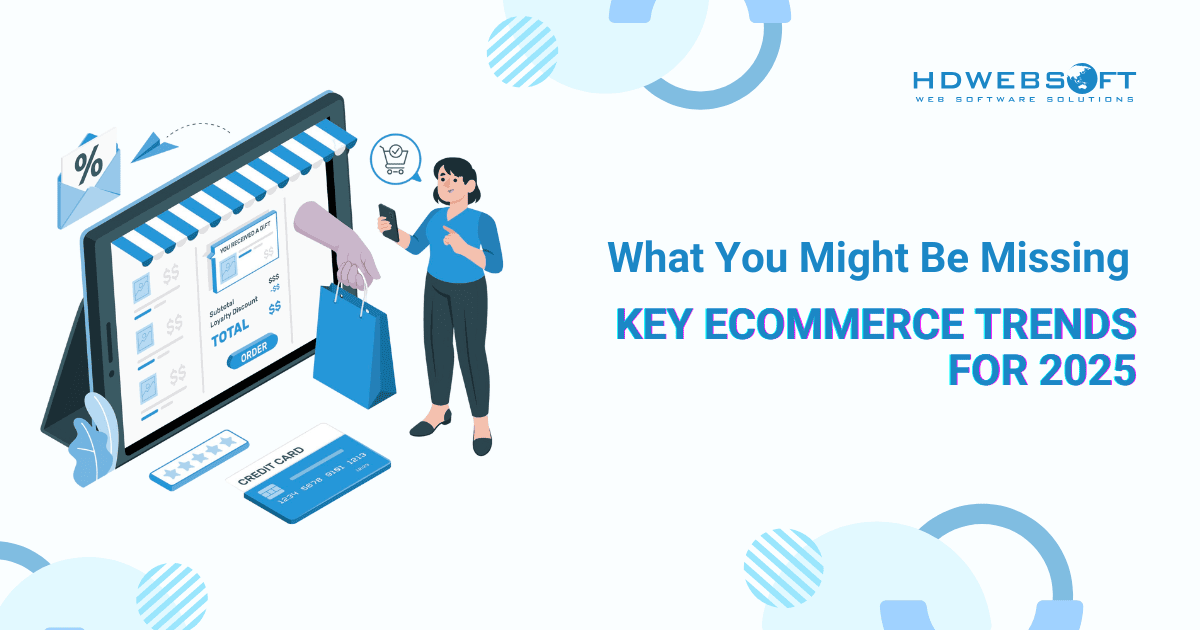
What You Might Be Missing: Key Ecommerce Trends for 2025
Each year, we share our insights on emerging ecommerce trends as part of our commitment as an experienced ecommerce software development company. Our goal is to help businesses understand the shifting landscape of online retail. This involves looking not only at technology but also at the evolving expectations of customers.
While tech innovations play a role, they are simply enablers. What truly shapes the future of ecommerce is the rising demand for seamless, personalized customer experiences. Notably, that demand continues to grow year after year. This year, we’re witnessing the ecommerce industry becoming more:
Contextual
Today’s trends of ecommerce increasingly focus on making shopping a natural part of everyday digital experiences. Rather than waiting for customers to visit a storefront, brands are taking a more proactive approach. They’re embedding purchase options into environments where people already spend time, such as social media, streaming platforms, or even virtual events.
What makes this approach exciting is the flexibility it offers. There’s no one-size-fits-all strategy. Following the latest ecommerce trends, businesses can tailor their efforts creatively to meet their audience at the right moment. Whether that means opening new sales channels or simply rethinking how and when to present offers. The key is to anticipate needs and make buying feel effortless.
A small example
Instead of relying on traditional ads, a fitness brand could partner with a workout app. Through this partnership, they could recommend and sell gear tailored to the user’s workout type right as they’re exercising. This isn’t just about pushing a product; it’s about providing value in the moment, making shopping a seamless part of the experience.
Ultimately, embracing this model requires creativity more than capital. Retailers need to shift their thinking from “How do we sell?” to “Where and when do customers want to buy?”
On-the-go Commerce
The evolution of ecommerce trends continues to be shaped by the growing dominance of mobile devices. What began as a convenience in the early 2000s has now become an expectation. Consumers want seamless, fast, and intuitive shopping experiences no matter where they are.
Thanks to continual innovations by ecommerce developers, mobile shopping is no longer a luxury; it’s become the norm. And the numbers tell the story: by 2025, mCommerce sales are projected to hit $2.51 trillion, marking a 21.25% increase from 2024’s $2.07 trillion. As is evident, the statistic highlights just how central mobile commerce has become to everyday life.
The rise of voice-assisted shopping
Taking this a step further, voice-assisted shopping is emerging as the next frontier in mobile convenience. With the help of AI-powered assistants and smart speakers, users have new ways to shop. They can now search for and purchase products without even needing to touch their screens.
As ecommerce trends continue to shift toward seamless, user-friendly experiences, voice technology is gaining significant traction. Whether at home using devices like Alexa or on the move with voice-integrated shopping apps, buyers are embracing hands-free options.
Interestingly, in the UK, contactless card payments have seen a significant rise in value over time. According to Statista, the average transaction amount increased from £6.9 in 2015 to £12.4 by May of this year. This is a signal of a clear demand for voice-enabled, distraction-free shopping solutions.
Subscription-Based Commerce
Nowadays, subscription-based commerce has become a staple in the modern ecommerce landscape, reflecting the broader shift from traditional ecommerce solutions. It evolves far beyond its original purpose of simplifying repeat purchases. Initially designed to help consumers avoid the hassle of reordering necessities, subscription models now offer tailored, flexible experiences across a wide range of industries.
Ecommerce trends have highlighted three core types of subscription models businesses can use. These models vary depending on the niche and customer behavior.
First, replenishment subscriptions are ideal for routine essentials like groceries, pet food, or cleaning supplies. They also extend beyond physical goods. Services such as housekeeping or pet care can easily adopt this model to provide convenience and reliability.
On the other hand, curation-based subscriptions focus on discovery. Customers receive personalized sample boxes, allowing them to explore new products without making a commitment upfront. Hence, this model is particularly successful in niche lifestyle markets. For instance, a box of organic skincare for eco-conscious consumers or a monthly bundle of low-sugar snacks for fitness enthusiasts.
Lastly, access subscriptions offer exclusive perks to members. They can include early product launches, members-only content, event invitations, or expert insights, such as guided workouts or beauty tutorials. Thus, these experiences build a sense of community and loyalty, transforming one-time buyers into long-term brand advocates.
Maybe you haven’t read: Why AI in Retail is a Breakthrough for Businesses.
Ethical Values of Ecommerce Trends
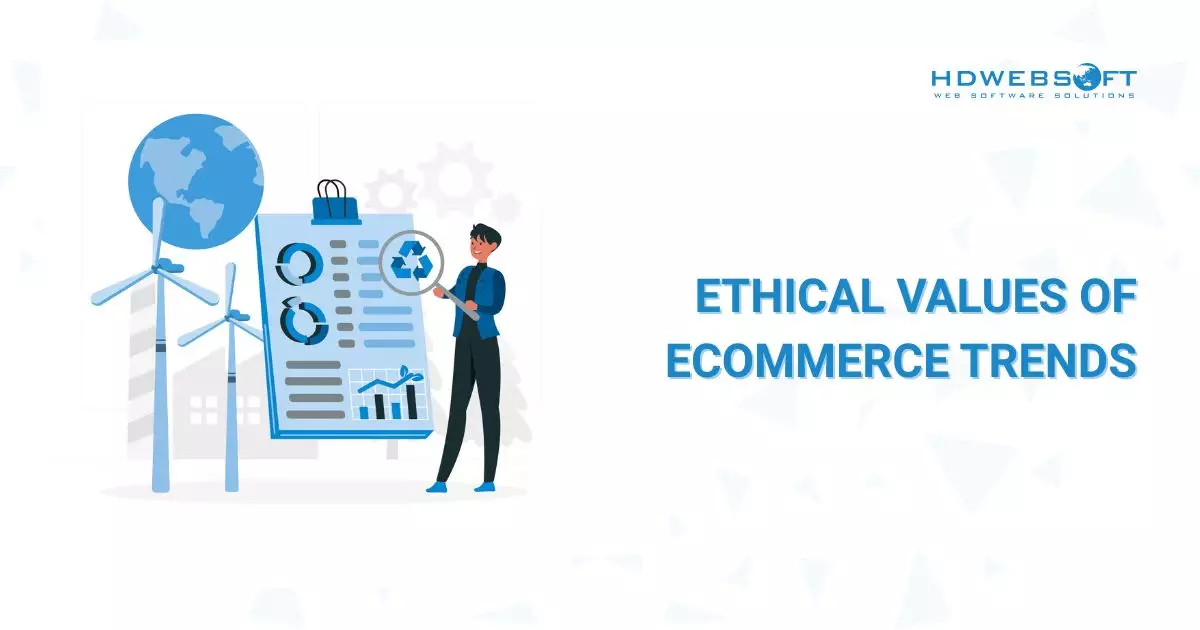
One of the most meaningful ecommerce trends emerging today is the growing focus on ethics and sustainability. With Millennials often dubbed ‘Generation Green,’ it’s clear that modern consumers are becoming more mindful. It’s not just about what they buy, but how it’s made, who makes it, and why the brand exists in the first place. Shoppers are actively seeking out businesses aligned with their values, placing weight on environmental practices, fair labor, and social responsibility.
While ethical commerce might appear as just another trend, it’s more than a tactic to win over conscious buyers. It also reflects a deeper shift in how brands operate. From sourcing sustainable materials to promoting inclusivity, companies are reshaping their identities around integrity and impact.
Eco-Conscious Ecommerce in Action
Take Proof Eyewear as an example. They’ve built a transparent, eco-friendly model by using only sustainable materials and investing in global charity work. Or consider ASOS, which took a major step in supporting body diversity. They’ve been showcasing the same outfit on various body types.
Whether through planet-first production or championing social causes, ethical ecommerce trends are about making business better for everyone.
Content-Driven Ecommerce
Among the most influential trends in ecommerce this year is the continued rise of content-centric strategies. In a saturated digital marketplace, authentic and engaging content is no longer optional; it’s essential. Consequently, well-crafted content builds trust, educates customers, and plays a key role in guiding purchase decisions.
Video Content Takes the Lead
While visuals have always been powerful, 2025 has clearly become the era of video. Research suggests that product videos can boost purchases by up to 144%. In fact, it offers shoppers the visual assurance they need when they can’t physically interact with a product.
From how-to guides to storytelling clips, brands are getting creative with formats that bring their offerings to life. Many of these advancements are driven by AI-powered content personalization in ecommerce. It’s the leading technology that enables retailers to deliver the right video content to the right audience at the perfect moment. Even behind-the-scenes team videos or influencer endorsements are helping humanize ecommerce brands and deepen customer connection.
User-Generated Content Builds Trust
Another one of equally impactful ecommerce trends is the growth of user-generated content (UGC). In many ways, it’s the digital form of word-of-mouth marketing.
Retailers are amplifying their credibility by encouraging real customers to share reviews, unboxings, and tagged social media posts. As a result, they benefit from genuine voices that build trust and authenticity.
Not only does UGC strengthen the community, but it also influences buying decisions with far more authenticity than traditional advertising. This shift aligns with ongoing developments in advertising technology that help brands integrate customer content into their marketing strategies.
Technology-Driven
In the past, retailers often relied on a single piece of ecommerce software to manage everything from product catalogs to payment processing. But with customer expectations rising and competition intensifying, that one-size-fits-all approach is no longer sustainable.
Today, digital transformation is at the core of ecommerce evolution, pushing businesses to adopt systems like CMS, CRM, and ERP. Additionally, advanced tools for personalization and predictive analytics are in use.
By integrating these technologies to catch the wave of ecommerce trends, retailers unlock new potential. It isn’t just in crafting seamless customer experiences, but also in optimizing and automating internal operations.
Of course, digital transformation can seem like a daunting and costly journey. That’s why many businesses turn to agile road-mapping. By identifying and prioritizing areas with the highest potential impact, companies can roll out changes incrementally. This iterative approach allows for faster results, smarter resource allocation, and the flexibility to pivot strategies as new insights emerge.
Headless Commerce
Among the many trends shaping the industry, headless commerce stands out as one that primarily benefits retailers behind the scenes. While customers simply expect a smooth, modern shopping experience, it’s businesses that invest heavily in technology to make it happen. Headless architecture gives them the flexibility and control to deliver that experience on their own terms.
Unlike traditional ecommerce platforms, headless commerce separates the front-end (what users see) from the back-end (where business logic lives), connecting the two via APIs. As one of the technical ecommerce trends, this decoupled setup allows developers to build tailored user interfaces without being limited by back-end constraints. For retailers, that means faster rollout of new features, lower development costs, and greater agility in adapting to customer expectations.
It’s no surprise that businesses seeking highly customized and dynamic digital storefronts are increasingly opting for headless solutions to stay competitive and future-ready.
Further reading: An Overview of Software Development Models.
Your Next Step
There’s no need to dive headfirst into every ecommerce trend mentioned above. Begin by evaluating your current position. Consider the customer experience you offer, the technology stack you’re using, and how well it all aligns with your business goals. In essence, this assessment will help you identify clear gaps or missed opportunities that are worth addressing first.
As you continue evolving your ecommerce strategy, it’s wise to partner with experienced consultants who understand the shifting landscape. With the right guidance, you can adapt strategically and stay ahead in an industry that never stops moving.









